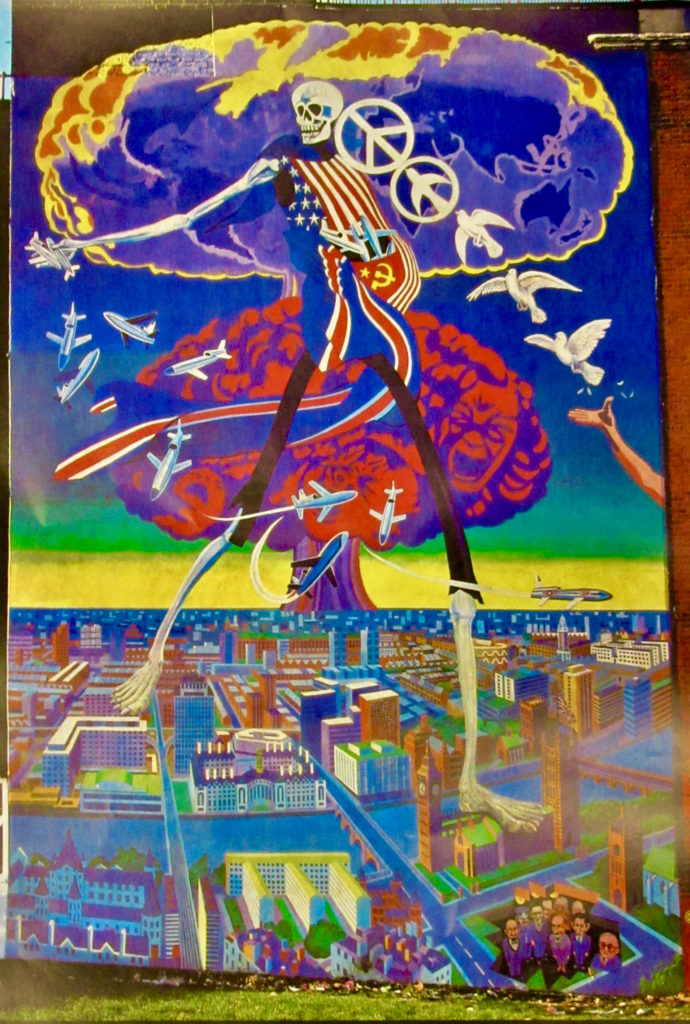duration:
5min
instrumentation: 2-2-2-2/4-3-3-1/timp, perc (3 players)/peace crane maker/strings
premiere: Gustavus Symphony Orchestra, Ruth Lin, Music Director ASWARA Academy, Kuala Lumpur, Malaysia on 01/28/2020
commissioned: Gustavus Adolphus College through gifts from the Class of 1954 Carillon Bells Endowment Fund In celebration of the Gustavus Symphony Orchestra’s 2020 international tour
Dedicated to Beatrice Fihn, Executive Director of The International Campaign to Abolish Nuclear Weapons (ICAN),and recipient of the 2017 Nobel Peace Prize
“The Treaty on the Prohibition of Nuclear Weapons provides the pathway forward at a moment of great global crisis. It is a light in a dark time. And more than that, it provides a choice. A choice between the two endings: the end of nuclear war or the end of us.” —Beatrice Fihn, December 10, 2019
On October 24, 2020, the UN Treaty on the Prohibition of Nuclear Weapons reached the required 50 states parties for its entry into force, after Honduras ratified just one day after Jamaica and Nauru submitted their ratifications. In 90 days, the treaty will enter into force, cementing a categorical ban on nuclear weapons, 75 years after their first use.
ICAN’s Executive Director Beatrice Fihn welcomed the historic moment. “This is a new chapter for nuclear disarmament. Decades of activism have achieved what many said was impossible: nuclear weapons are banned,” she said.
Performance Note: During the piece, one person sits to the left of the conductor and folds an origami peace crane. At the close of the piece (on the last chord), this person stands and places the completed paper peace crane in their palms and then raises their arms up in celebration of this icon for a nuclear weapon-free world.

“Nuclear Dawn: a mural in Brixton, London by Brian Barnes MBE” Copyright ©1981 by Brian Barnes. Used by permission of the artist.
Program Notes
Fanfare for a Weapon-Free World (Fanfar för en vapenfri värld) is a piece that calls for the end of war and nuclear weapons. Dedicated to Beatrice Fihn, Executive Director of the International Campaign to Abolish Nuclear Weapons (ICAN) and a 2017 Nobel Peace Prize Laureate, this work sonically promotes the notion that a more peaceful, equal and beautiful future is possible. Three iconic symbols of peace—a plowshare, two olive tree branches and the folding of a paper peace crane—are included in the piece.
Fanfare for a Weapon-Free World unfolds in five sections, each of which has a Swedish subtitle, reflecting the fact that Beatrice Fihn is Swedish and the Nobel Foundation is based in Stockholm, Sweden. It also acknowledges the Swedish heritage of Gustavus Adolphus College. A catalyst for the concept of the piece was the 1981 anti-war mural “Nuclear Dawn” in Brixton by the London-based artist Brian Barnes. The mural portrays the skeletal death of war about to be defeated by a flock of doves becoming peace symbols.
Marked expansive and hopeful, the opening fanfare “Fredsdrömmaren (the Peace-dreamer)” is scored for unison trumpets and percussion—consisting of Swedish stones, plowshare and Tam-tam.
The next section “Freden får vingar (Peace gets wings)” has the strings making bird-like wing sounds by tapping on the body of their instruments.
This sound leads into the meditative “Gongbad (Gong Bath),” a sound healing section for three gongs. Percussionists use eGong wands, Superball and Yin-Yang mallets to create cosmic and whale song-like sounds.
Solo flute and strings guide us through the lyrical and elegiac “In memoriam: Allt är förlorat i ett krig (In memoriam: all lost to war)” as the gong bath continues to wash over the sonorities.
“Vi vill ha bröd, INTE BOMBER (We want bread, NOT BOMBS)” brings back the opening fanfare theme with one of the percussionists playing two French bread baquettes.
What follows next is “Gryning för fred igen (Dawn for peace again)”, which features a child-like, joyful melody with the percussionists playing glockenspiel (or carillon if available) and olive tree branches.
“Nedrustning (Disarming)” involves a heightened and intense reprise of the opening fanfare. A coda for full orchestra with many bell sounds brings the piece to a celebratory close.
Special thanks to:
- Gustavus Adolphus College for their support through the Class of 1954 Carillon Bells Endowment Fund
- Ruth Lin and the Gustavus Symphony Orchestra for their commitment to new music and living composers
- Roland Thorstensson, Professor Emeritus—Scandinavian Studies at Gustavus Adolphus College—for his expert Swedish translations
- David Fienen and Chad Winterfeldt—for sharing their carillon expertise
- Bruce Karstadt, President and CEO of the American Swedish Institute in Minneapolis, and Erin Swenson-Klatt, Food and Handcraft Educational Programs Coordinator at the American Swedish Institute in Minneapolis, for gathering stones from Sweden
- Brian Barnes—for permission to use his mural “Nuclear Dawn” for the score’s cover
Cover image: “Nuclear Dawn: a mural in Brixton, London by Brian Barnes MBE” Copyright ©1981 by Brian Barnes. Used by permission of the artist.
